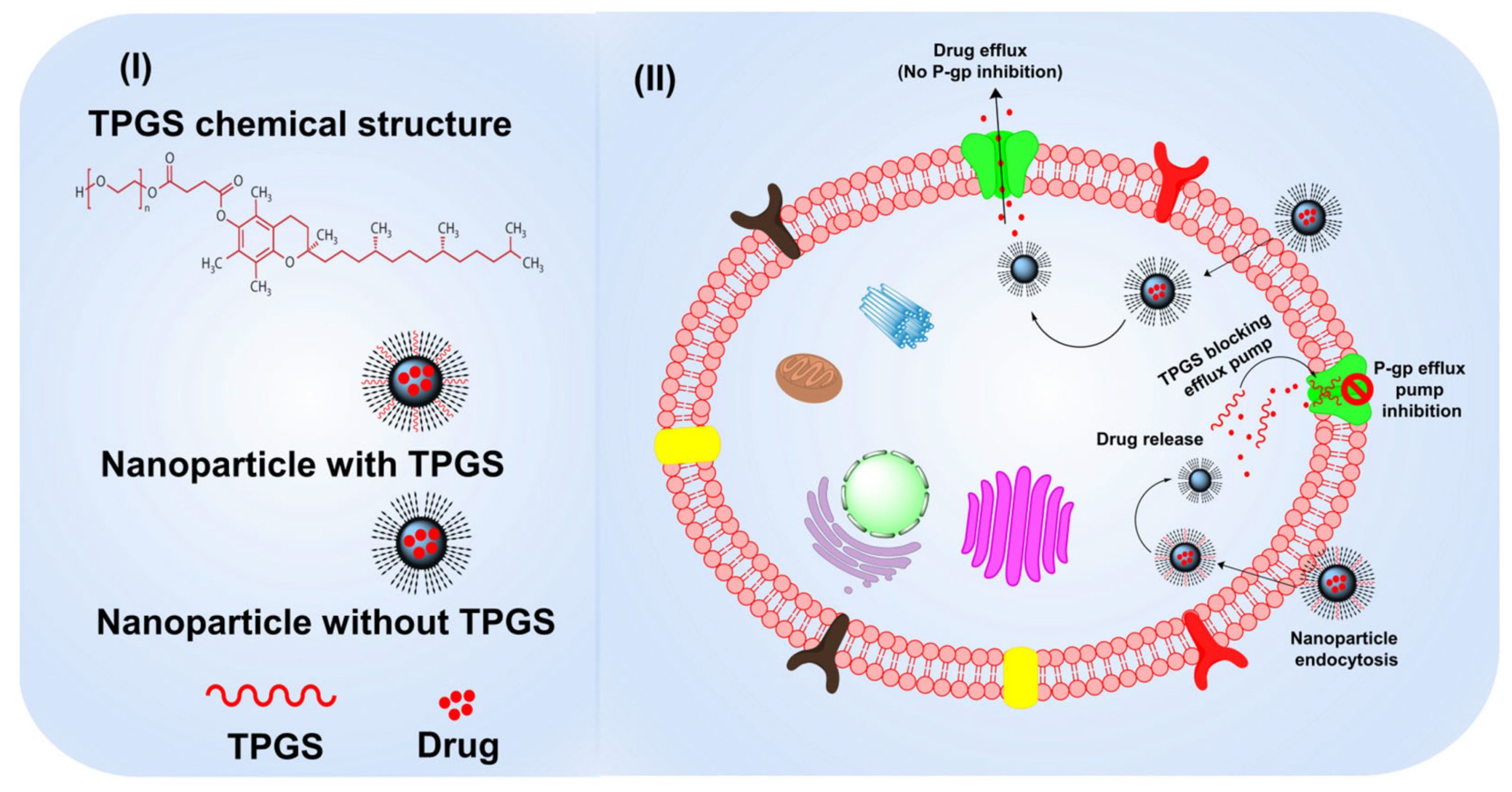Vitamin E TPGS-Based Nanomedicine, Nanotheranostics, and Targeted Drug Delivery: Past, Present, and Future

It has been seventy years since a water-soluble version of vitamin E called tocophersolan (also known as TPGS) was produced; it was approved by USFDA in 1998 as an inactive ingredient. Drug formulation developers were initially intrigued by its surfactant qualities, and gradually it made its way into the toolkit of pharmaceutical drug delivery. Since then, four drugs with TPGS in their formulation have been approved for sale in the United States and Europe including ibuprofen, tipranavir, amprenavir, and tocophersolan. Improvement and implementation of novel diagnostic and therapeutic techniques for disease are goals of nanomedicine and the succeeding field of nanotheranostics.
Specifically, imaging and treating tumors with nanohybrid theranostics shows promising potential. Docetaxel, paclitaxel, and doxorubicin are examples of poorly bioavailable therapeutic agents; hence, much effort is applied for developing TPGS-based nanomedicine, nanotheranostics, and targeted drug delivery systems to increase circulation time and promote the reticular endothelial escape of these drug delivery systems. TPGS has been used in a number of ways for improving drug solubility, bioavailability improvement, and prevention of drug efflux from the targeted cells, which makes it an excellent candidate for therapeutic delivery.
Through the downregulation of P-gp expression and modulation of efflux pump activity, TPGS can also mitigate multidrug resistance (MDR). Novel materials such as TPGS-based copolymers are being studied for their potential use in various diseases. In recent clinical trials, TPGS has been utilized in a huge number of Phase I, II, and III studies. Additionally, numerous TPGS-based nanomedicine and nanotheranostic applications are reported in the literature which are in their preclinical stage. However, various randomized or human clinical trials have been underway for TPGS-based drug delivery systems for multiple diseases such as pneumonia, malaria, ocular disease, keratoconus, etc. In this review, we have emphasized in detail the review of the nanotheranostics and targeted drug delivery approaches premised on TPGS. In addition, we have covered various therapeutic systems involving TPGS and its analogs with special references to its patent and clinical trials.
1. Introduction
Download the full review as PDF here: Vitamin E TPGS-Based Nanomedicine, Nanotheranostics, and Targeted Drug Delivery: Past, Present, and Future
or read it here
Mehata, A.K.; Setia, A.; Vikas; Malik, A.K.; Hassani, R.; Dailah, H.G.; Alhazmi, H.A.; Albarraq, A.A.; Mohan, S.; Muthu, M.S. Vitamin E TPGS-Based Nanomedicine, Nanotheranostics, and Targeted Drug Delivery: Past, Present, and Future. Pharmaceutics 2023, 15, 722.
https://doi.org/10.3390/pharmaceutics15030722

